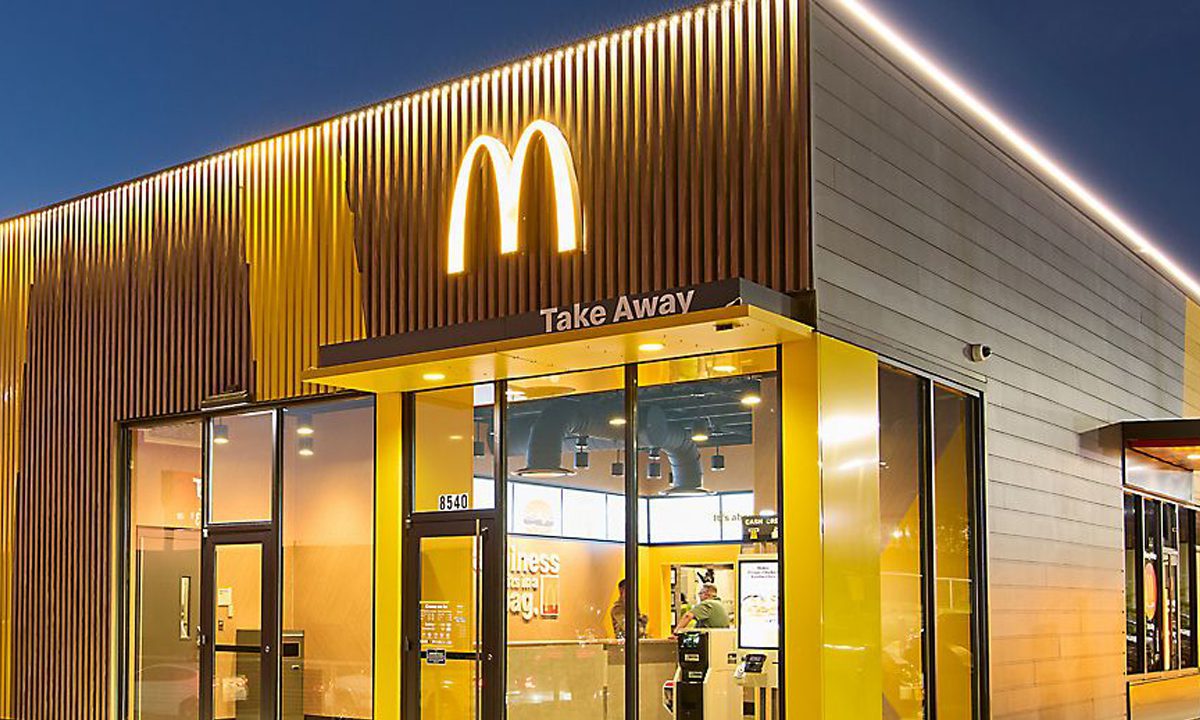McDonald’s Conveyor Belt Drive-Thru Leads Spate of Takeout Tinkering

As restaurant brands look to secure consumers’ digital loyalty, McDonald’s is testing new store formats.
The quick-service restaurant (QSR) brand announced in a company blog post Thursday (Dec. 1) that it is trying out a new concept at a store outside Fort Worth, Texas meant to boost off-premise efficiency. The most outside-the-box feature being tested is a conveyor belt drive-thru lane where consumers collect their order-ahead purchases.
Other elements include a pick-up room for delivery drivers, kiosks for ordering, a self-pickup shelf, and designated parking spots for curbside customers and for couriers. The building itself is smaller than the typical store.
“As our customers’ needs continue to change, we are committed to finding new ways to serve them faster and easier than ever before,” Max Carmona, senior director of global design and restaurant development at McDonald’s, said in a statement.
The news suggests McDonald’s, which as of 2019 had more than 20,000 drive-thru locations around the world, is seeking ways to boost its drive-thru performance following a recent decline as pandemic trends have normalized. Chief Financial Officer Ian Borden noted on an earnings call last month that the channel is “basically back to what it was pre-COVID in terms of percentage of sales.”
In getting experimental with its drive-thru, McDonald’s is following in the footsteps of Mexican-inspired QSR chain Taco Bell, which unveiled its “Defy” concept in June, a two-story model in which the kitchen sits above a four-lane drive-thru, and orders are sent down to customers via a vertical lift (essentially a mini food elevator).
“We believe what the new drive-thru will become in the future [is] a technology-reliant operating system that merges both the order and the pick-up point into one [and] which creates less waits for consumers,” Taco Bell Vice President and Chief Operating Officer Mike Grams told PYMNTS in an interview.
Jack in the Box Tries Out To-Go-Focused Format
Smaller competitors are getting in on the action too, trying out their own off-premise-focused locations. Jack in the Box (which, with its 2,200 locations, would only be considered a smaller brand in relation to giants such as McDonald’s and Taco Bell) shared last week (Nov. 22) that it has been rethinking store concepts with an eye towards mobile ordering and other convenience-centric channels.
CEO Darin Harris said on a call discussing the company’s fourth quarter and full-year financial results that the company has been “updating guest touch points” by improving the web and mobile ordering experiences, making changes to menu boards and putting forward a “new restaurant design for the future.”
“In fact, a drive-thru and walk-up-only prototype debuted in Tulsa, Oklahoma during quarter four,” Harris said.
U.S. Government to Dole out $83 Million in Restaurant Relief
Nearly two years after the initial passage of the American Rescue Plan, the $1.9 trillion COVID relief bill that includes $28.6 billion allocated to the Restaurant Relief Fund (RRF) for small eateries, the last of those funds are finally making it into the hands of business owners. The U.S. Small Business Administration (SBA) announced last week (Nov. 23) that it has determined and contacted the recipients of the remaining $83 million.
The news comes at a time when the industry has been seeing positive growth, according to research from PYMNTS’ study “The Main Street Index Q3 2022: The Post-Pandemic State Of Play For Main Street Businesses.”
Get the study: The Main Street Index Q3 2022: The Post-Pandemic State Of Play For Main Street Businesses
The report, which draws on data from the Quarterly Census of Employment and Wages, econometric analysis and modeling techniques to determine the overall health of Main Street small and medium-sized businesses (SMBs), finds the eating and drinking establishments’ index has grown 1.2% last year on a CAGR basis. While this figure is modest, it is certainly a step in the right direction, considering all the economic headwinds the industry faces.